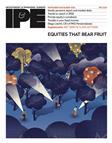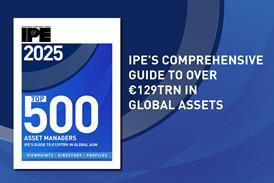There is a widely held, almost unchallenged view that index tracker funds deliver returns or performances in line with their respective indices. There may be some allowance for expenses, usually quite small, and for some variation, or tracking error, arising because such funds may not necessarily hold all the stocks in an index. So when an investor reads that a particular index returned 10% say, over some period then the investor might expect the value of a portfolio to be almost 10% higher than that at the outset.
Such a view would be difficult to challenge if the investor had all the money in the tracker fund at the start of the period, with no subsequent additional investment. Where there had been additional investment between the start and end of the period, such as an investor with monthly cash flow, then only by sheer chance will all such investments have earned 10%.
Consider a simple example where a tracker fund’s performance is exactly in line with its index and the investor has two cash flows, one at the start of the period, the second half way through.
Let the return over the first half period be 10% and over the
second half period be –5%. Then
the total return is 4.5%, from ((1+10/100)¥(1–5/100)-1)¥100%. All the marketing material, conventional investment mathematics and performance standards would agree on the two period return being 4.5%. An investor might think 4.5% was thus earned on their investments.
That would be the case if all the money had been invested at the start. £100 (E160) would have increased to £104.50. However, if £50 had been invested at the start and another £50 was invested at the halfway point, then the investor would have a portfolio finally valued at £99.75, from (50¥(1+10/100)+50)¥(1–5/100). This may perhaps be seen more clearly as the first £50 earning 4.5% to the end, or £52.25, while the second £50 earned –5% over this second period, valuing it at £47.50 by the end. These sum to £99.75, representing a capital loss of £0.25 on the invested monies, not a gain. But the investor is quoted an index return of +4.5%.
Thus, instead of ‘chain-linking’ or multiplying daily, weekly or monthly returns (time-weighted returns or TWR’s) to compute longer term returns, try a different approach of computing the final value from a series of monthly payments into tracker funds.
Each monthly payment is multiplied by the final index value over the index value on the day of investment, and the resulting values summed to provide a total. This total should be the same as the value quoted to the investor, after due allowance for expenses.
This alternative measurement approach was applied to 12 FTSE All Share tracker funds that existed throughout 1998. In that year the total return on this index was 13.77%. But this return, computed as per standards, is just the final total return index value for the year divided by the initial. An initial investment of £600 would thus be valued at £682.62 at the end, assuming no costs. This approach does not allow for the investor paying regular sums into the funds at the start of each month. A quick examination of the index movements over the year shows that during the summer months the index was at a higher level than at the end. So investors ‘lost’ value on some of their payments.
Consider an investor paying £50 per month, £600 in total. If these amounts had been invested in the index, without cost, the capital sum at the end of the year would have been £623.53. This represents a return of 3.92% on the total capital invested, or 7.84% on the average capital invested of £300. Quite a bit different from 13.77%.
Each of the 12 tracker funds makes investment charges. On initial charges, they vary from 0% to 6% while on annual management fees they vary from 0.3% p.a. to 1.5% p.a. The average initial charge works out at 1.8% while the average annual management fee is 0.8%. Now assume that an investor, paying £50 per month incurs these average charges but achieves exact index performance on each of the investments of £50. The value at the end of the year is £609.66. Thus average expenses reduce the expected value from £623.53 to £609.66, a figure which represents a return of 1.61% on the total sum invested, or 3.22% on the average sum invested, all very different from 13.77%.
The next stage in this comparative exercise is to check on the impact of actual expenses charged by each of the funds but assume for the moment that performance is exactly in line with the index. There are four tracker funds whose cost impact is the least. Each of them had a nil initial charge but had a 0.5% annual management fee. Thus assuming perfect tracking of the index, an investor with £50 per month would have a portfolio valued at £621.84. This compares very favourably with the gross value of £623.53, only £1.69 of expenses, much lower than the average of £13.87.
At the other extreme, the impact of the tracker fund with the highest charges of 6% initial and a management fee of 1.5% was to reduce the value, assuming perfect tracking, to £581.38, some £28.28 more than the average cost and £40.46 more than the four least costly funds.
So after expenses, there was a tracker fund that generated a capital loss for its monthly investors, but the index returned +13.77%. This tracker was not alone in losing capital value because of expenses – there were three other such funds. Their common feature was the imposition of an initial charge of at least 5% which seriously detracted from returns.
Having accounted for charges, the next and final stage is to compare the actual end-year value of each tracker with those values found after allowing for expenses only. The difference if any, represents tracking error and/or investment skill if a positive number and tracking error and/or lack of skill if negative.
Relative to a cost-free, perfect tracker value of £623.53, two of the tracker funds had actually generated a higher value, the highest being £625.63. Therefore despite expenses, these two funds, in not tracking the index precisely, actually managed to add value through investment skill.
One of the two was not even one of the lowest cost providers, charging a management fee of 1%. The fund with the highest charges also managed to add value but all the other nine lost some value through failing to track properly.
These ‘tracking errors’ cost approximately between £2 and £8 for the monthly investor, but the worst tracker lost over £40, more than offsetting any benefit gained by also being one of the lowest cost providers.
In summary, two of the tracker funds were valued at more than £623.53, the value assuming perfect tracking and nil expenses, another five were valued between £600 and £623.53, but the remaining five trackers were worth less than £600 at the year-end. The worst was valued at just over £580. The difference between the best and the worst tracker in one year was nearly one month’s payment.
All these funds were tracking the All Share Index, quoting a return of 13.77% as a benchmark return. By way of comparison, all portfolio returns were positive, this judgement based upon dividing the initial unit price into the final unit price, as per conventional practice. These range from just over 13% down to less than 3%. But these positive numbers, effectively TWR’s, do not square with five of these tracker funds losing value for the monthly investor.
The table below lists all these key features but questions arise:
o Why persist in using TWR’s when they are hopelessly inadequate for the assessment of relative performance for the regular investor?
o If the regular investor is being misled by the use of conventional TWR’s to present relative performance, why should they believe and encourage the use of GIPS? (Global Investment Performance Standards as promoted by AIMR)
o Why are regulators unwilling to insist on past performance numbers for tracker funds? It is understandable, to some extent, the reasons for ‘active’ funds, but tracker funds should deliver what is expected. That is performance in line with the chosen benchmark or index. High expenses and poor tracking skills should be exposed as such. Whose side are the regulators on? Is it the investor or the money managers?
So do tracker funds track indices? There is now a better, accurate, informative and perhaps surprising answer.
Gordon Bagot is an independent consultant based in Edinburgh








No comments yet